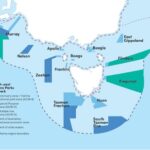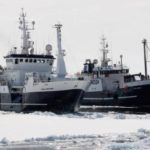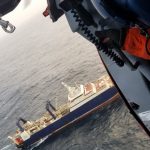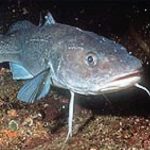Tag Archives: Southern Gulf of St. Lawrence
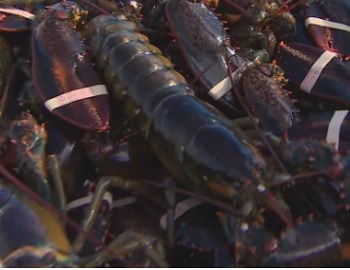
Stock assessments show Maritime lobster population strong, fishery sustainable
Adam Cook is a DFO biologist who tracks lobster populations along the Scotian Shelf and Bay of Fundy, waters that support nearly 3,000 commercial licence holders in 12 lobster fishing areas (LFAs). Cook and his colleagues recently posted stock assessments for 2022. He said all LFAs in the Maritimes are in a healthy zone for stock status. “Which suggests there’s still enough lobster to not raise any sort of conservation concerns. The commercial biomass is doing quite well,” Cook said. It’s the same story in the southern Gulf of St. Lawrence, although DFO’s stock assessments for five fishings area in that region have not been posted. >click to read< 10:17
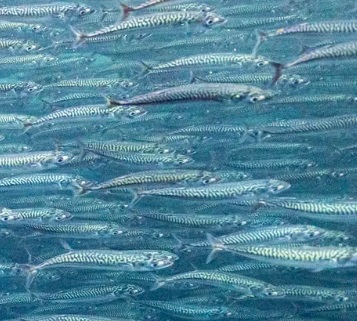
‘The people’s fish’: Atlantic mackerel stocks have collapsed – can a moratorium bring them back?
Canada’s Atlantic mackerel population is a shadow of what it once was, and its decline threatens the well-being of the people who depend on it. Mackerel supports one of Atlantic Canada’s top recreational fisheries, and one of its oldest commercial fisheries. The fish is also used for bait, and it has an important place in Indigenous cultures. The same migratory stock supports recreational and commercial fisheries in the U.S. Last March, the federal Department of Fisheries and Oceans closed Canada’s commercial and bait mackerel fisheries for one year and placed daily personal limits on the recreational fishery, to give the population time to rebound. But the U.S. fishery remains open, albeit with a reduced quota. Next week, federal Fisheries Minister Joyce Murray will decide whether to reopen the Canadian fishery. The DFO’s latest studies have found no sign of recovery in the mackerel stock. Photos, >click to read< 13:09

Seafood industry urges ‘extreme caution’ on controlling seals to avoid consumer backlash
Canada’s seafood industry is urging Ottawa to use “extreme caution” when considering measures to control the growing seal population, warning they could jeopardize market access and acceptance of Canadian seafood. But according to Conservative fisheries critic Clifford Small, a member of parliament from Newfoundland and Labrador, those concerns are overblown. “It is immensely important that as the government considers potential steps moving forward, its actions do not disrupt either the market access or acceptance of Canadian fish and seafood products, both internationally and domestically,” said Paul Lansbergen, president of the Fisheries Council of Canada. Lansbergen said both the U.S. and the European Union have strict rules regarding the harming of marine mammals during fishing. >click to read< 14:50
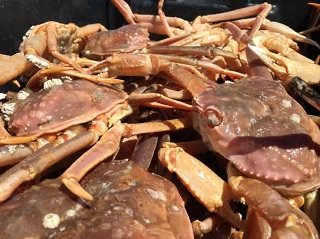
Russian snow crab weighs down our markets
The snow crab fishing season in the southern Gulf of St. Lawrence this year was weighed down by the arrival on the American market of large quantities of this crustacean from Russia. This Russian crab was imported in abundance amid shortages last fall, due to the closure of the fishery in Alaska, and when household spending was on the rise. However, what was selling at a high price then continued to lose its value during the winter, when the American and Canadian governments ended the aid programs linked to the pandemic and when consumers finally deconfined recovered. to travel rather than eat expensive crab at home. Additionally, US buyers continued to buy Russian crab in droves this spring, rather than Canadian crab, before it was affected by the trade embargo due to the war in Ukraine. >click to read< 8:44
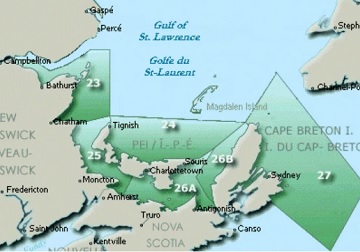
Lobster fishing season in the southern Gulf of St. Lawrence will open on Tuesday
The Department of Fisheries and Oceans announced on Saturday that lobster fishing areas 23, 24, 26A and 26B South will open on May 3 at 6 a.m. That includes areas along the northeastern coast of New Brunswick, the north shore of P.E.I., the western coast of Cape Breton, and part of the Northumberland Strait. The season was supposed to start on Saturday, but earlier this week the DFO postponed the opening due to the weather and the need for dredging at many harbours. >click to read< 19:40

Higher Snow Crab Quota in the Southern Gulf of St. Lawrence in 2022
Due to Canada’s robust science and sustainable fishery management practices, the snow crab stock in the southern Gulf of St. Lawrence is healthy and is showing signs of continued health. For these reasons, the Minister of Fisheries, Oceans and the Canadian Coast Guard, the Honourable Joyce Murray, is pleased to announce that this year’s total allowable catch (TAC) for the Snow crab fishery in the southern Gulf of St. Lawrence will be 32,519 tonnes, up from 24,261 tonnes in 2021. >click to read< 15:01
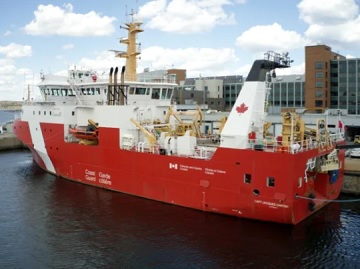
New fisheries research ship will monitor state of P.E.I. stocks
The Capt. Jacques Cartier took part in the 51st annual September survey in the Southern Gulf of St. Lawrence last month, along with the ship that it will eventually replace, the CCGS Teleost. The work follows an 18-month delay in getting the new ship operational because of malfunctions, delays receiving parts, and COVID-19-related travel restrictions in Nova Scotia.,, The research vessel will collect fish using a bottom trawl, then sort all the species, measuring and counting every creature drawn up. “For P.E.I. that would include lobster, mackerel, halibut. Essentially, all the oceanic species that are exploited in P.E.I.” photos, >click to read< 10:48
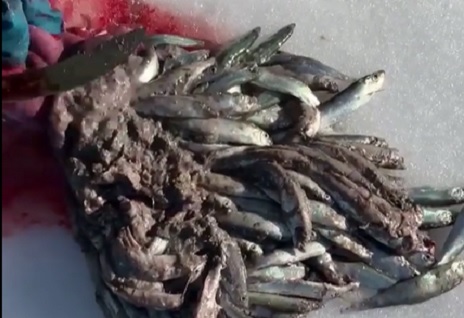
Wow. Just, Wow. A belly full of fish ramps up seal debate
If you have a weak stomach, the video might be difficult to watch. But for fish harvesters in Newfoundland and Labrador, the images of a seal stomach being cut open to reveal a gut full of small herring and Arctic cod is proof enough that seals are a factor in the slow recovery of cod stocks. Last week Dion Weir and a buddy hunted a few seals for personal use in Hall’s Bay, off the Baie Verte Peninsula. They were filled with small fish. “Up in these bays now they’re eating herring and Arctic cod,” Weir said. “Wherever the cod is, the seals are there.” Multiply that by 7.6 million seals,,, >click to read< 15:42
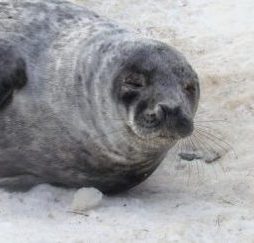
Following seal predation report, FFAW calls for government action
FFAW-Unifor accuses the Department of Fisheries and Oceans of remaining “complacent while evidence mounts that an overpopulation of seals is having a serious impact on important fish species.” A study conducted by DFO shows that a lack of cod recovery in the southern Gulf of St. Lawrence may be caused by predation by grey seals, and could account for up to 50 per cent of natural cod mortality. This is limiting the cod stock’s recovery, DFO said. An assessment predicts a 32 per cent drop in cod numbers over the next four years. >click to read< 10:03
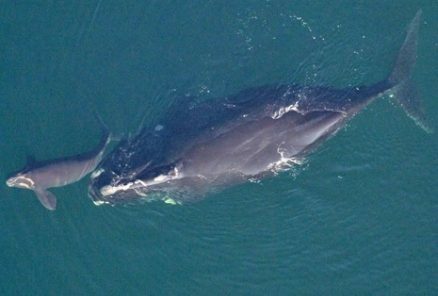
All right whales survived visit to Canadian waters last year
No North Atlantic right whales died in Canadian waters in 2018, so protective measures will continue, a Fisheries spokesperson says. The year free of deaths means the protective measures implemented last year are working, said Adam Burns, director general for fisheries resource management with Department of Fisheries and Oceans. “In 2018 there were at least as many North Atlantic right whales in the southern Gulf of St. Lawrence as there were in 2017, when we had all of those incidents, and we continued to have fishing activity in those same areas,” Burns said. In 2017, the death toll came to 18. Twelve of the whales died in Canadian waters. >click to read<14:17
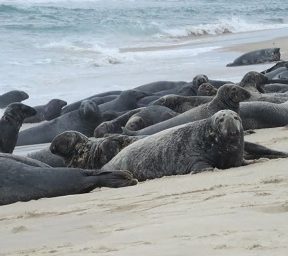
Southern Gulf of St. Lawrence cod could be extinct by mid-century: report
There is a high probability that Atlantic cod will be locally extinct in the southern Gulf of St. Lawrence by mid-century — even with no commercial fishing, according to a new report. The paper, published in the Canadian Journal of Fisheries and Aquatic Sciences, says the death rate now stands at 50 per cent for adult Gulf cod five years and older. The likely culprit? Grey seals. “That high a natural mortality is not sustainable,” says Doug Swain, a federal Fisheries Department scientist who co-authored the study. >click to read<10:12

LETTER: Need thorough, unbiased environmental study
I’d like to address publically, the situation in Pictou County involving Northern Pulp and the subsequent closure of Boat Harbor by 2020 with regards to the ‘replacement’ treatment plan which ultimately includes a pipeline for the treated effluent to be discharged into the Northumberland Strait which is part of the Southern Gulf of St. Lawrence.,,, It should also be noted that the new home of the end of the purposed pipeline is the heart of LFA 26. (Lobster Fishing Areas – there are 41 LFA’s in Canada, of them, LFA 26 as a whole is amongst the highest producers in tonnage of annual lobsters landed). I’m highlighting lobster as this is the main source of revenue for the 1000 plus fishers that fish this zone commercially. John Collins, Alma Road click here to read the story 18:48
Southern Gulf of St. Lawrence – Direct link between the increase in the herd of seals and increased the mortality of cod
 A study conducted by researchers from fisheries and Oceans Canada just give reason to those who believe that the grey seal is a real threat to the balance of the cod stocks. For Magdalen Islanders hunters as for Gaspé fishers, this conclusion says and just put an end to a debate that lasts for years. This article was translated from French Canadian Read the rest here 16:49
A study conducted by researchers from fisheries and Oceans Canada just give reason to those who believe that the grey seal is a real threat to the balance of the cod stocks. For Magdalen Islanders hunters as for Gaspé fishers, this conclusion says and just put an end to a debate that lasts for years. This article was translated from French Canadian Read the rest here 16:49
Is Decline in Snow Crab Caused by 2002 Seismic Testing?
![]() The Margaree Environmental Association (MEA) is concerned that the crab fishery cutbacks in the , along the shores of Cape Breton Island, due to the decline in the crab population, may have been caused by seismic testing which was carried out in this area in late 2002. Read more here 16:56
The Margaree Environmental Association (MEA) is concerned that the crab fishery cutbacks in the , along the shores of Cape Breton Island, due to the decline in the crab population, may have been caused by seismic testing which was carried out in this area in late 2002. Read more here 16:56
Then, this: Seismic survey will give Statoil better handle on Bay du Nord find Read more here 17:03


































